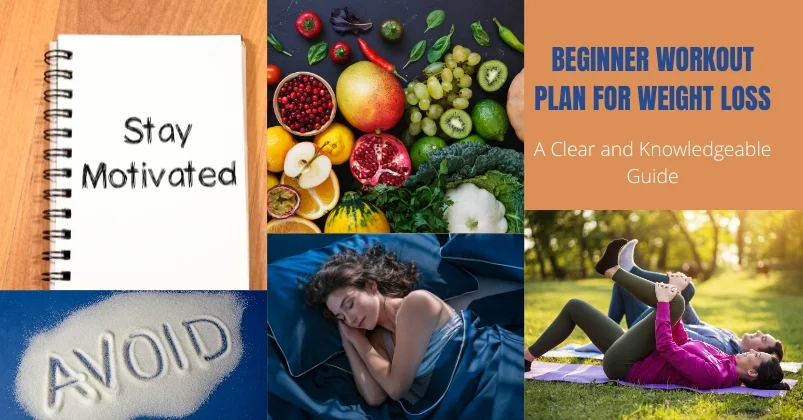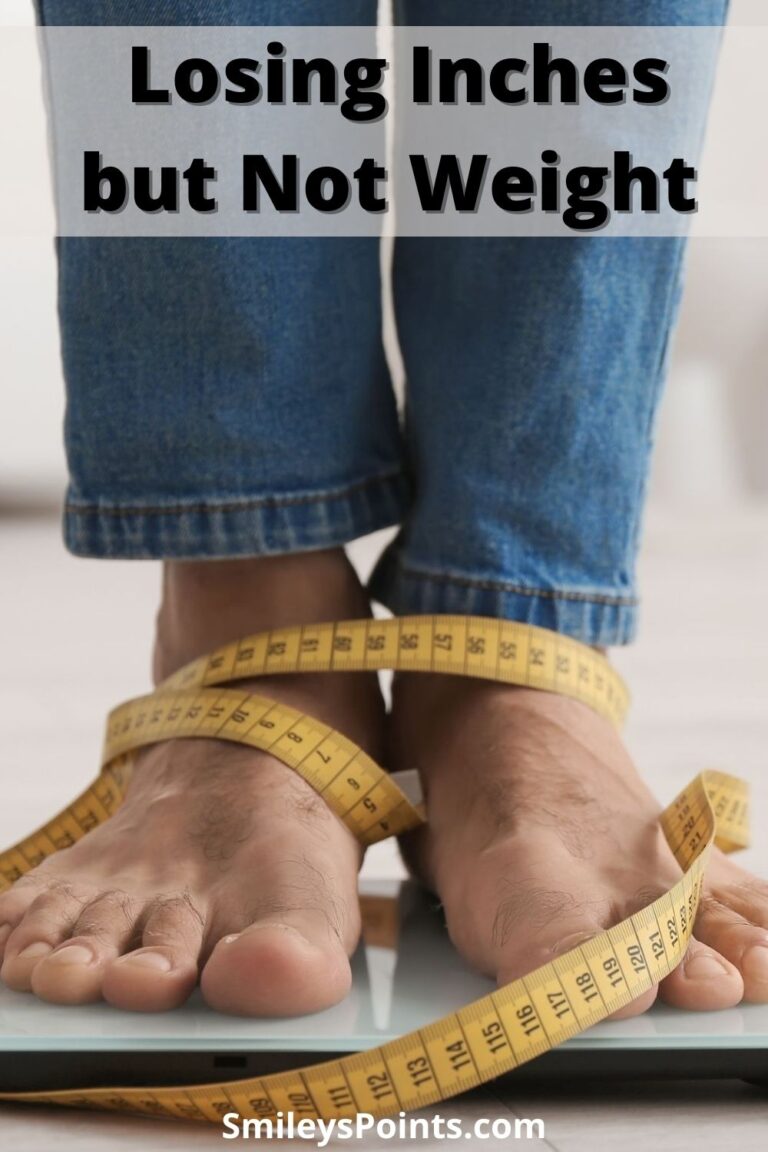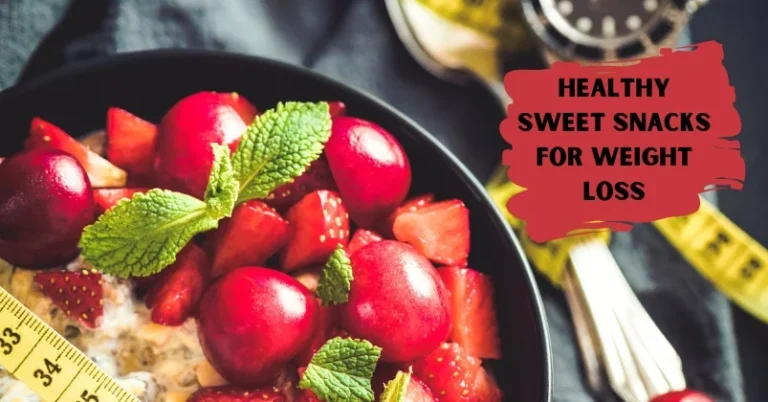Beginner-Friendly Workout Plan for Effective Weight Loss: Your Ultimate Guide
Losing weight, especially as a beginner, can feel overwhelming, but with the right workout plan, it doesn't have to be. A well-designed beginner workout plan can make shedding those extra pounds more manageable while also boosting your overall fitness and health.
The first step in creating an effective workout plan is to set realistic goals. It's essential to understand that weight loss is a gradual journey, not a quick fix. By setting small, achievable goals, you give yourself something to strive for and celebrate along the way, which keeps you motivated and on course.
Once you’ve established your goals, it’s time to plan your workouts. An effective beginner workout plan should include both cardio and strength training exercises. Cardio activities like running, cycling, or swimming are great for burning calories and improving heart health. Meanwhile, strength training exercises, such as weight lifting or bodyweight routines, are key to building muscle and boosting your metabolism.
By incorporating a balanced mix of these exercises into your routine, you’ll be well on your way to reaching your weight loss goals while enhancing your overall fitness and well-being.
Understanding Weight Loss
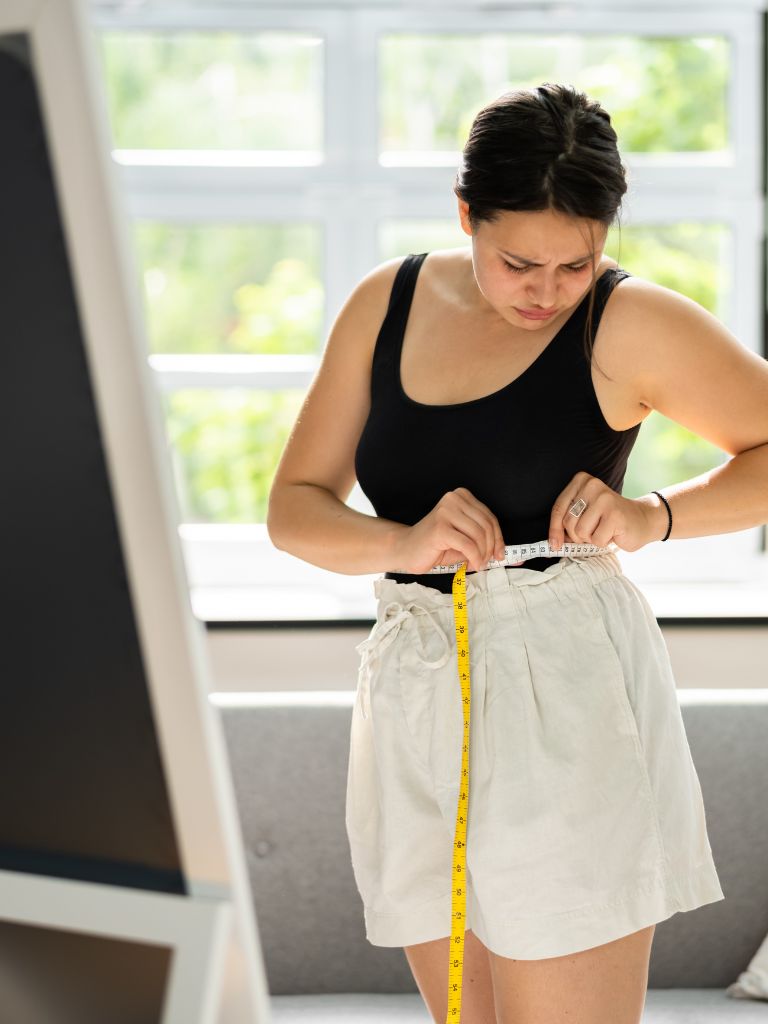
The Science of Weight Loss
Losing weight is more than just cutting calories—it's about creating a balance where your body burns more calories than you take in. When you consume fewer calories than your body needs, it turns to stored fat for energy, leading to weight loss. But simply eating less isn't enough; increasing your physical activity is key, as it helps you burn more calories and build muscle.
Metabolism also plays a significant role in this process. It's how your body converts food into energy. Factors like your age, gender, and body composition influence your metabolic rate. The faster your metabolism, the more calories you burn, even when you're not active.
Importance of Workout in Weight Loss
Exercise is a crucial part of any weight loss journey. It not only helps you burn calories but also builds muscle and boosts your metabolism. Plus, regular exercise comes with added health benefits like lowering your risk of chronic diseases, such as heart disease and diabetes.
For the best results, it's important to combine aerobic exercise with strength training. Aerobic exercises like running or cycling are great for burning calories and improving your heart health. Meanwhile, strength training helps you build muscle, which in turn increases your metabolism and helps you burn more calories even when you're at rest.
In a nutshell, weight loss involves both eating fewer calories and staying active. By understanding how exercise contributes to this process, you can create an effective workout plan that supports your weight loss goals.
Getting Started
If you’re new to weight loss, starting with a plan that’s both safe and effective is key. Here are a few tips to help you kick off your journey on the right foot.
Consulting with a Healthcare Provider
Before diving into any new exercise or diet plan, it's a good idea to check in with your healthcare provider. They can assess whether you're in good shape to start a weight loss program and offer advice on the best types of exercise and diet for your situation.
Setting Realistic Goals
Setting realistic goals is another crucial step. It’s important to aim for goals that you can actually achieve and maintain. For instance, trying to lose 1-2 pounds a week is a healthy and manageable target.
Tracking Your Progress
Keeping track of your progress is also key. Whether you use a journal or a mobile app, monitoring your journey can help keep you motivated and allow you to tweak your plan as needed.
Starting a weight loss program can be tough, but with a solid plan and the right support, you can reach your goals. Just remember to be patient, stay committed, and always put your health and safety first.
Creating a Balanced Diet

Understanding Nutrition
To reach your weight loss goals, it’s essential to focus on a balanced diet that gives your body the nutrients it needs. This means including a mix of foods from all the major food groups-fruits, vegetables, lean proteins, carbs, and healthy fats. Knowing the basics of nutrition is crucial for crafting a diet that’s both healthy and satisfying.
Importance of Protein and Carbohydrates
Protein and carbohydrates play a key role in weight loss. Protein is vital for building and repairing muscles, which helps keep your metabolism running smoothly. Carbohydrates, on the other hand, are your body’s main source of energy, fueling your workouts and daily activities. Both are essential for supporting your weight loss journey.
When picking your protein, go for lean options like chicken, fish, or legumes. For carbs, choose complex ones like whole grains, fruits, and vegetables. These choices offer steady energy and are packed with fiber, keeping you fueled throughout the day.
Avoiding Processed and Sugary Foods
For weight loss, it’s best to steer clear of processed and sugary foods. These are often loaded with empty calories and lack essential nutrients, making it easier to gain weight. Instead, focus on whole, unprocessed foods that are nutrient-dense and provide lasting energy.
In a nutshell, a well-rounded diet that includes a variety of foods from all the food groups is key to successful weight loss. Prioritize understanding nutrition, opt for lean proteins and complex carbs, and avoid processed and sugary options to keep your diet balanced and effective.
Establishing a Workout Routine
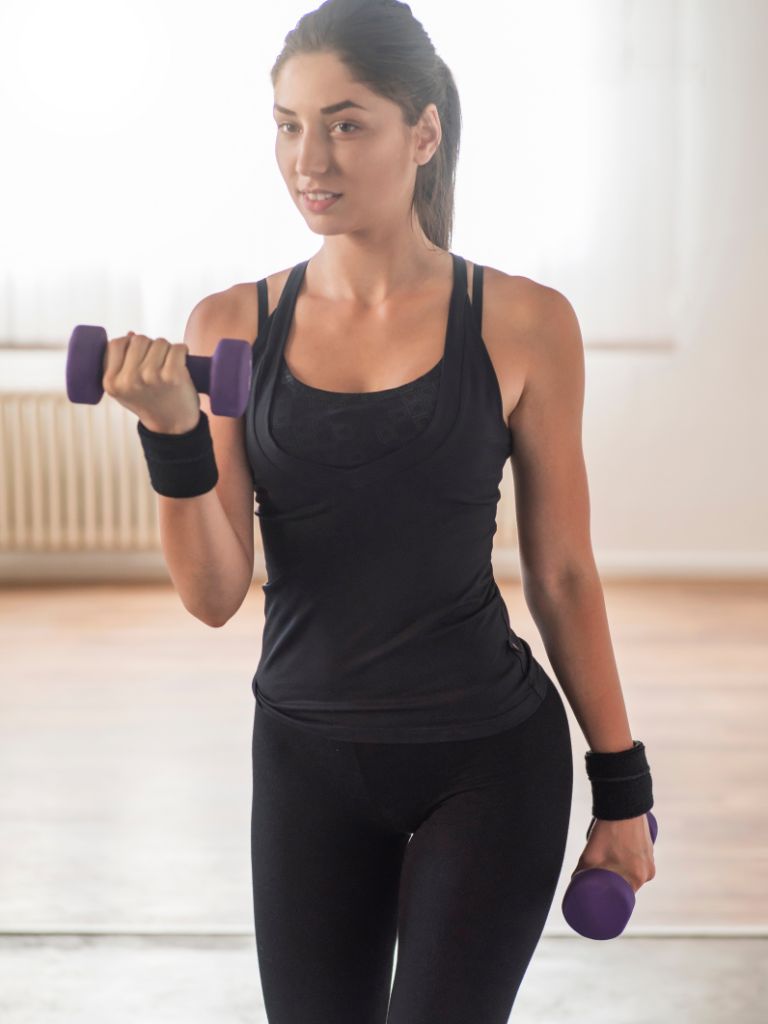
Starting a beginner workout plan for weight loss can be daunting, but establishing a workout routine can help you stay on track and achieve your goals. Here are some important factors to consider when creating your workout routine:
Importance of Consistency
Sticking to a workout routine is all about consistency. Try to set a regular schedule and stick with it. Whether you prefer working out in the morning or evening, aim to exercise at the same time each day. This helps turn your workouts into a habit and makes it easier to keep up with your routine.
Planning Rest Days
Rest days are just as crucial as workout days. Your body needs time to recover and rebuild after exercising, so make sure to include rest days in your routine and honor them. Taking a break and giving yourself time to rest is perfectly okay and necessary for long-term progress.
Choosing the Right Exercises
When you’re just starting a workout routine, it’s important to pick exercises that hit multiple muscle groups and get your heart pumping. This helps you burn more calories and work towards your weight loss goals. For beginners, great options include:
- Walking
- Jogging
- Cycling
- Swimming
- Strength training with light weights
Start at a comfortable pace and gradually build up the intensity and duration of your workouts. Don’t rush things too hard too soon can lead to injuries. By sticking to a consistent routine, including rest days, and choosing the right exercises, you’ll be well on your way to reaching your weight loss goals.
Types of workout for Weight Loss

When it comes to weight loss, exercise is an essential component. There are different types of exercises that you can incorporate into your workout routine to help you achieve your weight loss goals. Here are some of the most effective types of exercises for weight loss:
Cardiovascular Exercises
Cardio exercises are great for getting your heart rate up and improving your overall cardiovascular health. They’re effective for burning calories and include activities like running, cycling, swimming, and aerobics.
Strength Training
Strength training should also be a key part of your weight loss plan. It helps build muscle, which boosts your metabolism and helps you burn more calories. Examples include weightlifting, bodyweight exercises, and resistance band workouts.
Circuit Training
Circuit training combines strength and cardio exercises in one workout, usually with minimal rest between exercises. This method is fantastic for burning calories and building muscle simultaneously.
High-Intensity Interval Training
High-Intensity Interval Training (HIIT) involves alternating between short bursts of intense exercise and brief periods of rest or lower intensity. HIIT is powerful for burning calories and enhancing cardiovascular health. Common HIIT exercises are sprinting, jumping jacks, and burpees.
Mixing these types of exercises into your routine can help you reach your weight loss goals. Just remember to start slow and gradually increase the intensity and duration to avoid injury.
Specific Exercises and Their Benefits
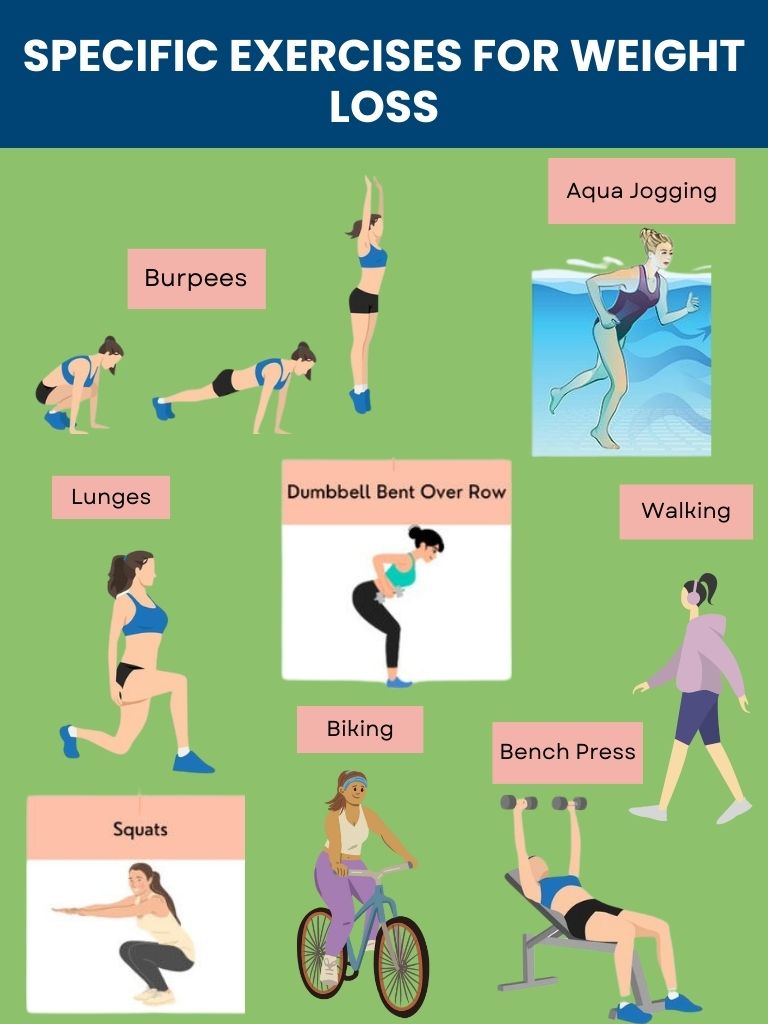
Squats and Lunges
Squats and lunges are fantastic exercises for weight loss because they work several muscle groups at once, including your glutes, quads, hamstrings, and calves. They also help improve balance and stability, which can reduce your risk of injury.
To do a squat, stand with your feet shoulder-width apart and lower your body as if you’re about to sit in a chair. Make sure to keep your back straight and your knees behind your toes. For a lunge, step forward with one foot and lower your body until your front knee is bent at a 90-degree angle. Push back to the starting position and repeat with the other leg.
Bench Press and Dumbbell Rows
Bench presses and dumbbell rows are excellent for toning and strengthening your upper body, including your chest, back, and arms. To do a bench press, lie on a bench and push a barbell or dumbbell upward. For dumbbell rows, bend over and pull a dumbbell toward your chest.
These exercises are perfect for beginners because you can adjust the weight to match your fitness level. Start with lighter weights and gradually increase as you build strength.
Walking and Biking
Walking and biking are fantastic low-impact exercises for beginners looking to lose weight. They're simple, accessible, and fit into any schedule, making them ideal for those with busy lives. Plus, they boost cardiovascular health and lower the risk of chronic diseases.
To maximize the benefits, try to walk or bike for at least 30 minutes a day, five days a week. To make your workouts more challenging, add some hills or try interval training.
Aqua Jogging and Burpees
Aqua jogging and burpees are both high-intensity exercises that can seriously amp up your calorie burn and boost strength. Aqua jogging involves running in water, which is gentle on the joints but still provides a solid workout. On the other hand, burpees combine jumping, squatting, and push-ups into one intense full-body exercise.
These moves are more demanding and might not be ideal for everyone, especially if you're just starting out. However, if you're ready to challenge yourself and elevate your fitness routine, incorporating aqua jogging and burpees can be a great way to do it.
In summary, adding these exercises to your workout plan can accelerate weight loss and enhance overall health. Just remember to ease into them and gradually increase the intensity as your strength improves.
Creating a Full-Body Workout Plan
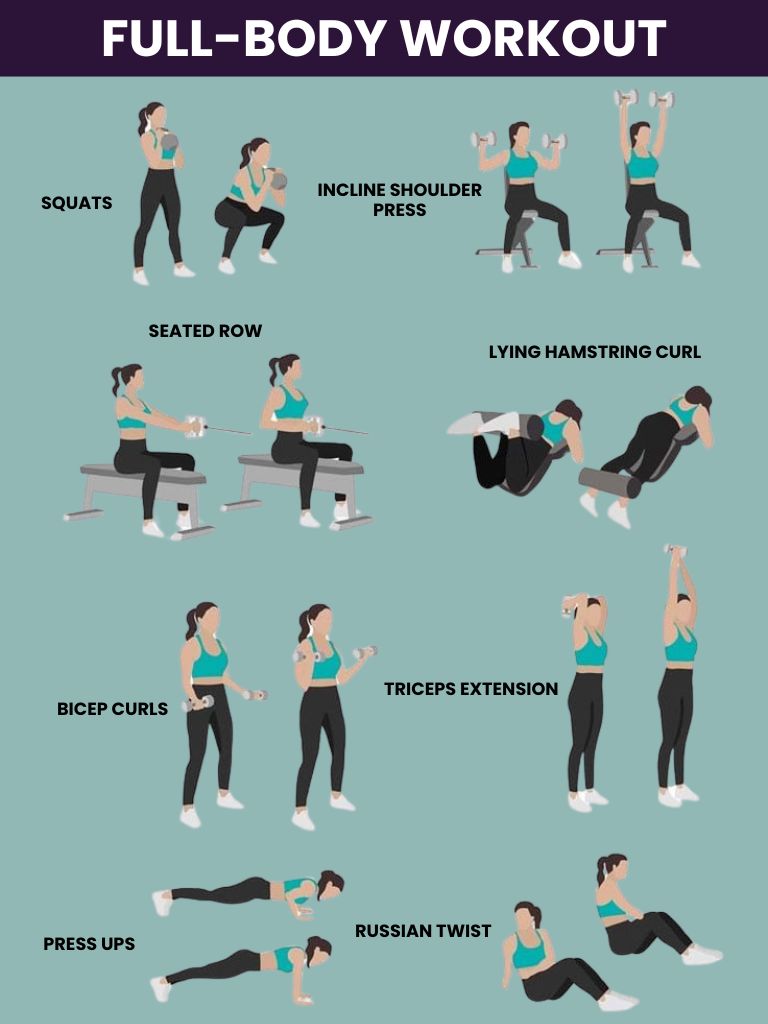
When it comes to weight loss, a full-body workout plan can be an effective way to target all of your muscle groups and burn calories. Here are a few tips for creating a full-body workout plan that will help you reach your weight loss goals.
Understanding Muscle Groups
Before you start planning your workouts, it's important to understand the major muscle groups in your body. These include:
- Chest
- Back
- Shoulders
- Biceps
- Triceps
- Abs
- Glutes
- Quads
- Hamstrings
- Calves
By targeting each of these muscle groups in your workouts, you can create a balanced and effective full-body workout plan.
Planning a 12-Week Program
To see results from your full-body workout plan, it's important to stick with it for at least 12 weeks. During this time, you can gradually increase the intensity of your workouts to challenge your body and continue to see progress.
Here's an example of a 12-week full-body workout plan:
| Week | Workouts |
| 1-4 | Full-body workout 3 times per week |
| 5-8 | Full-body workout 4 times per week |
| 9-12 | Full-body workout 5 times per week |
Each workout should target all of the major muscle groups, with a focus on compound exercises that work for multiple muscle groups at once.
Incorporating Rest and Recovery
Rest and recovery are just as important as exercise when it comes to weight loss. Make sure to give your body time to rest and recover between workouts, and avoid overtraining.
Here are a few tips for incorporating rest and recovery into your full-body workout plan:
- Take at least one rest day per week
- Incorporate active recovery, such as yoga or stretching, into your routine
- Get plenty of sleep to allow your body to recover
- Listen to your body and adjust your workouts as needed
By following these tips and creating a balanced full-body workout plan, you can achieve your weight loss goals and improve your overall health and fitness.
Understanding the Role of Sleep and Mood
The Importance of Sleep
Getting enough sleep is a key part of staying healthy and feeling your best. It’s not just about letting your body rest and recover; sleep also helps regulate your mood and appetite. When you don’t get enough rest, you might experience higher stress levels, less motivation, and even find yourself eating more, all of which can make losing weight harder.
To get the rest you need, try to aim for 7-9 hours of sleep each night. Sticking to a regular sleep schedule and setting up a calming bedtime routine can also make a big difference in the quality of your sleep.
Exercise and Mood Enhancement
When you work out, your body releases endorphins-those natural chemicals that make you feel happier and more relaxed. Regular exercise not only helps to reduce stress and anxiety but also boosts your self-confidence and self-esteem, which can further lift your mood and keep you motivated.
To get the most out of exercise for mood enhancement, try to engage in at least 30 minutes of moderate-intensity activity most days of the week. This could be anything from a brisk walk and jogging to cycling or swimming.
By focusing on both sleep and exercise, you can significantly improve your mood and motivation, which can be a big boost in achieving your weight loss goals.
Maintaining Progress and Overcoming Plateaus
Staying Motivated
Staying motivated is crucial to maintaining progress and reaching your weight loss goals. Here are some tips to help you stay motivated:
- Set realistic goals: Setting unrealistic goals can lead to frustration and disappointment. Instead, set small, achievable goals that you can work towards.
- Find a workout buddy: Working out with a friend can be a great way to stay motivated and accountable.
- Mix it up: Doing the same workout routine every day can get boring. Try new exercises or switch up your routine to keep things interesting.
- Celebrate your progress: Celebrate your progress, no matter how small. Take progress pictures or keep a journal to track your progress.
Adjusting Your Program as Needed
As you progress in your weight loss journey, you may hit a plateau. This is when your progress slows down or stops altogether. To overcome plateaus, you may need to adjust your program. Here are some tips:
- Increase your intensity: If you've been doing the same workout routine for a while, try increasing the intensity. This can help you break through a plateau.
- Change up your routine: If increasing intensity doesn't work, try changing up your routine. This can help shock your body into burning more calories.
- Focus on nutrition: Nutrition plays a big role in weight loss. Ensure you eat a balanced diet and get enough protein to support your workouts.
- Take a break: Sometimes, taking a break can be beneficial. Your body may need time to rest and recover before you can push through a plateau.
Remember, sustainable progress takes time. Don't get discouraged if you hit a plateau or if progress is slow. Stay consistent, adjust as needed, and celebrate your progress along the way.
FAQs
Some effective exercises for a beginner workout plan focused on weight loss include cardio exercises such as walking, jogging, cycling, and swimming. Strength training exercises such as squats, lunges, push-ups, and planks can also be beneficial for weight loss.
A beginner should aim to work out at least 3-4 times a week for weight loss. It's important to gradually increase the intensity and duration of the workouts over time.
Some recommended at-home workouts for beginners looking to lose weight include bodyweight exercises such as squats, lunges, push-ups, and planks. Yoga and Pilates can also be effective for weight loss and can be done at home with the help of online videos.
A good duration for a beginner workout plan aimed at weight loss is around 30-45 minutes per session. It's important to gradually increase the duration over time to avoid injury and burnout.
A beginner should prioritize cardio exercises such as walking, jogging, cycling, and swimming in their weight loss workout plan. Strength training exercises such as squats, lunges, push-ups, and planks should also be included to build muscle and boost metabolism.
Some tips for creating a sustainable and effective beginner workout plan for weight loss include setting realistic goals, gradually increasing intensity and duration, varying the workouts to avoid boredom, and seeking guidance from a fitness professional if needed. It's also important to prioritize rest and recovery and to listen to your body to avoid injury.

